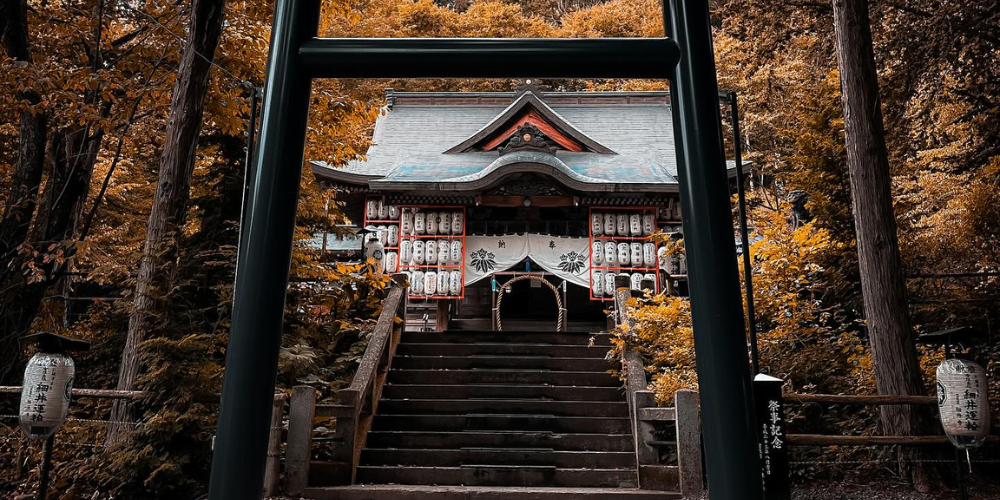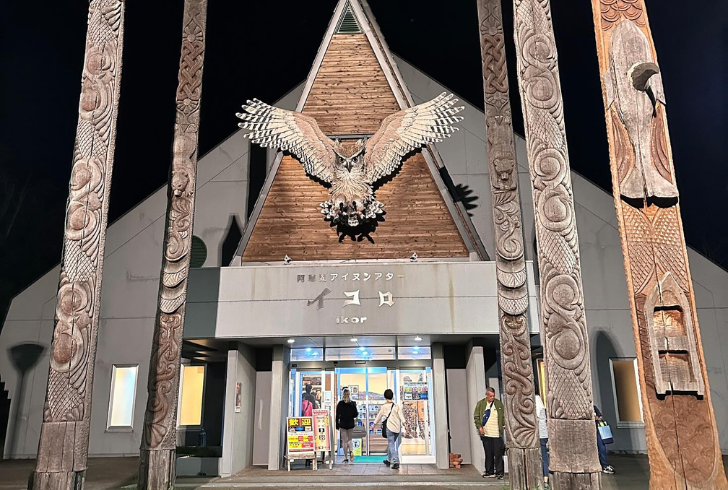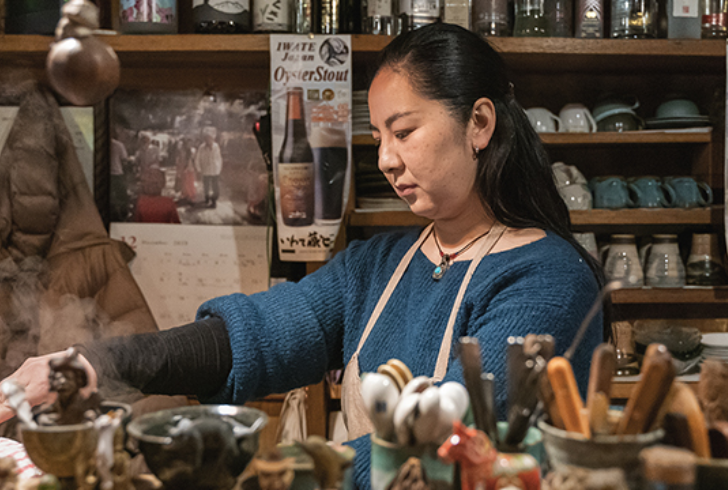
Artisans Preserve the Ainu Culture in Japan Through Traditional Crafts

At the edge of Akan-Mashu National Park in Hokkaido, Japan’s northernmost island, a small village stands as a living testament to Ainu heritage. This Indigenous community has long preserved its unique traditions, language, and craftsmanship despite modernization and social challenges.
Among the people keeping these traditions alive are artisans who create intricate embroidery, silver jewelry, and woven accessories, each infused with cultural significance.
The Legacy of the Ainu People
The Ainu are believed to have lived in Japan for over 30,000 years. Their culture is deeply connected to nature, with spiritual beliefs that attribute souls to animals, plants, and natural elements. In Ainu tradition, these spirits—called kamuy—offer resources like food, fur, and materials for crafts, all of which are treated with gratitude and respect.

Instagram | anaoha | Ainu Kotan, a 1950s village of 120 residents, serves as a hub for Ainu arts and crafts.
Despite centuries of assimilation policies, the Ainu have preserved their identity. Today, there are no official records of how many Ainu live in Japan, as ethnicity is self-reported. However, a recent survey in Hokkaido revealed that nearly 30% of Ainu respondents had experienced discrimination. Even so, their culture remains resilient, reflected in their art, music, and daily life.
One of the most prominent Ainu settlements is Ainu Kotan, a small village built in the 1950s. It is home to approximately 120 residents and has become a center for Ainu arts and crafts. Though never intended as a tourist attraction, its wooden buildings house an art gallery, a theater, and shops selling traditional crafts. Here, artisans continue to honor their heritage through their work.
Embroidery and Symbolism in Ainu Textiles
One of the artisans preserving Ainu craftsmanship is Erika Katsuya, a skilled embroiderer and traditional dancer. Her shop, Hapo’s Store, showcases handmade cotton garments, woven bags, and bamboo mouth harps known as mukkuri.
“My mother and grandmother taught me embroidery when I was a teenager,” she shared, recalling her deep-rooted connection to Ainu artistry. She specializes in chinjiri, an embroidery technique that involves stitching intricate patterns onto dyed hemp fabric. These designs are more than decoration—they carry cultural meanings passed down through generations.
Ms. Katsuya also crafts jewelry, including necklaces made from ikema, a vine believed to bring protection. The vines are gathered from the mountains, cleaned, dried, and shaped into charms. “My grandmother always wore an ikema necklace,” she reminisced, holding up a small piece adorned with wooden and glass beads.
Silver Jewelry Inspired by Ainu Patterns
Unlike many of his fellow artisans, Hiroyuki Shimokura does not have Ainu ancestry, but his deep respect for the culture led him to become a silversmith in Ainu Kotan. His journey began in 1999 when he visited the village after crafting a ring shaped like a bear’s paw. The experience left a lasting impression, and he dedicated himself to studying Ainu craftsmanship.
Mr. Shimokura now creates silver jewelry featuring traditional moreu (spiral) motifs and geometric patterns. His designs range from crescent-shaped pendants to bold, embossed cuffs. One of his signature pieces, the Kimun Kamuy ring, is shaped like a bear claw, with each strand of fur meticulously carved.
“To darken the fur, I dip the silver into gold chloride acid,” he explained, demonstrating how the chemical reaction creates contrast in the design. His craftsmanship has gained recognition, with pieces exhibited in museums and sold through retail collaborations.
Accessories Rooted in Nature

akanainu-next.jp | Fukiko Goukon preserves Ainu heritage at Poronno through traditional cuisine and cultural artistry.
Artisan and singer Fukiko Goukon continues her family’s legacy at Poronno, a restaurant at the entrance of Ainu Kotan. Serving traditional Ainu dishes like venison sashimi and deer curry, the restaurant is also a hub for culture and craftsmanship.
Ms. Goukon creates woven bracelets and chokers inspired by emush-at, an Ainu sword belt once worn by men. She learned the technique from her grandmother and aunt, later adapting it into her own unique style.
Her materials are sourced directly from nature. She uses fibers from the Nikko elm, a tree native to Japan. The process involves stripping the bark, soaking it in hot springs or wood ash, drying the fibers, and dyeing them before weaving them into accessories. Some of her bracelets also incorporate Yezo deer skin, antler buttons, and Achilles’ tendon fasteners.
“The spiritual culture of the Ainu is reflected in how we gather materials,” she said. “We take only what we need, ensuring that nothing is wasted.”
Keeping Ainu Culture Alive
The artisans of Ainu Kotan are more than craftsmen—they are cultural storytellers. Every embroidered pattern, carved silver ring, and woven bracelet carries the weight of history, preserving a way of life that has endured for thousands of years.
While modern Japan continues to evolve, these artisans remain steadfast in their commitment to tradition. Their work not only sustains Ainu heritage but also introduces a wider audience to its beauty and significance. Through their hands, the past lives on, ensuring that the spirit of the Ainu continues to thrive.
More in Culture
-
`
Planning a Wedding? These Money-Saving Tips Actually Work
Weddings are meant to be memorable, not financially draining. But for many couples, the cost of tying the knot often brings...
June 24, 2025 -
`
Did MrBeast Really Borrow Money From His Mother for His Wedding?
YouTube star Jimmy Donaldson, widely known as MrBeast, sparked surprise when he shared a personal update on X. Despite leading the...
June 17, 2025 -
`
How Smart Technology Is Changing the Way We Travel
Technology has reshaped nearly every part of modern life, and travel is no exception. From how we plan trips to how...
June 12, 2025 -
`
Why Some Tech CEOs Are Replacing Themselves With AI Avatars
In a move that signals a shift in how corporate communication is handled, major tech CEOs are beginning to hand the...
June 3, 2025 -
`
Is Innovation Dead in American Pop Culture?
Has something changed in the way we engage with American pop culture? Scroll through your favorite streaming service, tune into the...
May 27, 2025 -
`
7 Key Steps to Start a Profitable Digital Products Business
Starting a digital products business offers an exciting opportunity to turn your skills and knowledge into a revenue-generating venture. Whether you’re...
May 20, 2025 -
`
Mercedes-Benz Introduces the Vision V – An Ultra-Luxury Electric Limousine
The introduction of Mercedes-Benz’s Vision V concept represents a significant advancement in the field of electric vehicles. This electric minivan is...
May 13, 2025 -
`
AI May Soon Replace Apps, Says Meta’s Chief Technology Officer
The way people interact with technology could soon see a major shift, one that changes daily habits without most even realizing...
May 6, 2025 -
`
Donald Trump’s Role in Changing the Face of American Culture
Changes in American politics often bring cultural aftershocks, but the shifts under President Donald Trump have reached deep into the core...
April 29, 2025














You must be logged in to post a comment Login